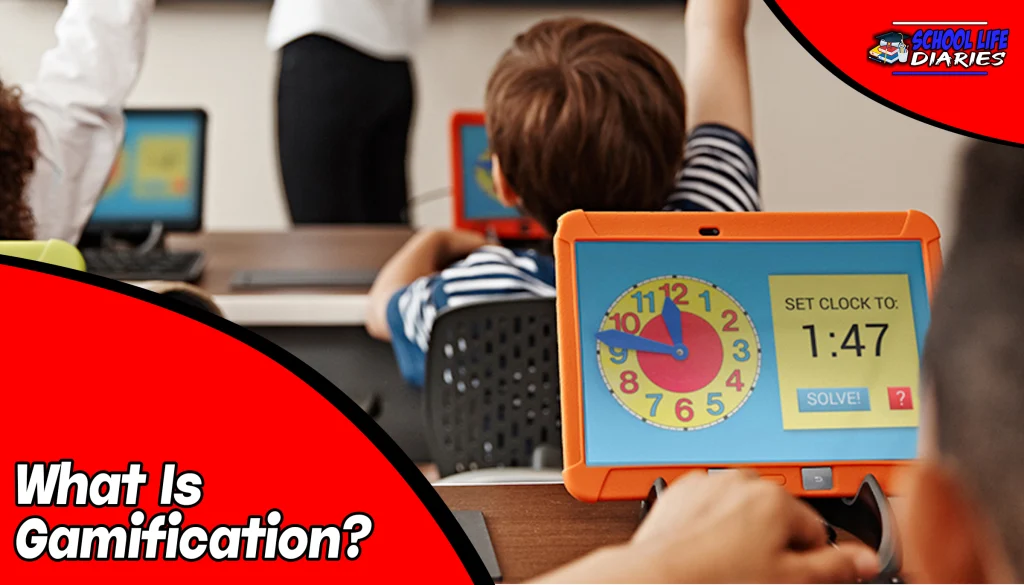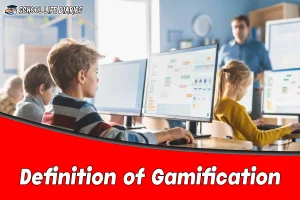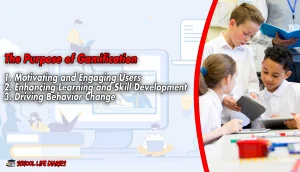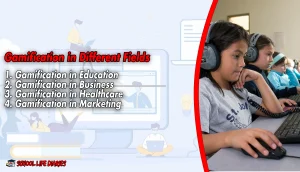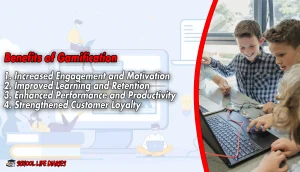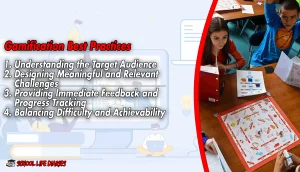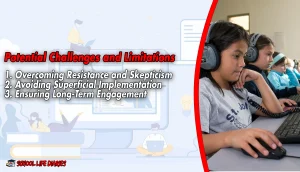In today’s fast-paced and technology-driven world, gamification has emerged as a powerful tool to capture and retain attention, enhance learning experiences, and incentivize desired actions. Whether it’s in education, business, healthcare, or marketing, gamification offers a unique approach to engage users by tapping into their innate desire for challenge, achievement, and rewards.
Understanding Gamification
Definition of Gamification
It can be defined as the integration of game elements and mechanics into non-game contexts to enhance user engagement, motivation, and overall experience. It involves the application of game design principles, such as competition, rewards, and achievements, to drive specific behaviors and achieve predefined goals.
Game-based learning is an innovative approach that harnesses the power of games to enhance the learning experience. By integrating educational content into engaging and interactive game formats, students are motivated to actively participate, problem-solve, and apply knowledge in a fun and immersive way.
Game-based learning promotes active learning, critical thinking, and collaboration, allowing learners to develop essential skills while enjoying the process. It offers a unique opportunity to make education more engaging and effective, ultimately leading to improved knowledge retention and academic success.
Elements of Gamification
It typically incorporates several key elements to create immersive and compelling experiences. These elements include:
- Points: Users earn points for completing tasks, reaching milestones, or demonstrating desired behaviors.
- Badges: Badges represent achievements or milestones within a gamified system, providing users with a sense of accomplishment.
- Leaderboards: Leaderboards display rankings of individuals or teams, fostering healthy competition and social interaction.
- Rewards: Rewards can take various forms, such as virtual goods, access to exclusive content, or tangible incentives, encouraging continued engagement and progression.
The Purpose of Gamification
Motivating and Engaging Users
One of the primary purposes of gamification is to motivate and engage users by leveraging their intrinsic motivation and desire for achievement. By incorporating game elements into tasks or activities, gamification creates a sense of enjoyment, challenge, and progression, making experiences more compelling and enjoyable.
Enhancing Learning and Skill Development
It has proven to be an effective strategy in educational settings, promoting active learning and improving knowledge retention. By transforming educational content into interactive and game-like experiences, learners are motivated to actively participate, explore, and acquire new skills and knowledge in an engaging manner.
Driving Behavior Change
In various industries, It is used as a powerful tool to drive behavior change. By providing incentives, feedback, and challenges, organizations can encourage users to adopt desired behaviors, such as healthy lifestyle choices, environmental conservation, or improved work habits.
How does Gamification work?
Game Mechanics and Dynamics
Gamification relies on a set of game mechanics and dynamics to create engaging experiences. These include:
- Progression: Users advance through levels or stages, unlocking new content, challenges, or rewards.
- Feedback: Frequent and meaningful feedback keeps users informed about their performance and progress.
- Challenges: Well-designed challenges provide users with achievable goals and a sense of accomplishment upon completion.
- Social Interaction: Incorporating social elements allows users to compete, collaborate, and interact with others, enhancing engagement and motivation.
Gamification in Different Fields
Gamification in Education
In education, It is being embraced as a means to make learning more engaging and effective. By incorporating game elements into educational platforms, teachers can create interactive experiences that stimulate curiosity, promote critical thinking, and facilitate knowledge retention.
Gamification in Business
Businesses have recognized the potential of gamification to enhance employee engagement, productivity, and training. By introducing gamified systems, organizations can motivate employees, track progress, and reward achievements, fostering a positive and goal-oriented work culture.
Gamification in Healthcare
It has found applications in healthcare, from promoting healthy behaviors to aiding patient rehabilitation. By gamifying fitness apps, for example, individuals are encouraged to exercise regularly, track their progress, and earn rewards, leading to improved adherence to wellness routines.
Gamification in Marketing
In the field of marketing, it is used to capture consumer attention, drive brand loyalty, and encourage desired actions. By incorporating game elements into promotional campaigns, marketers can create interactive experiences that captivate audiences, generate excitement, and reward engagement.
Benefits of Gamification
Increased Engagement and Motivation
By leveraging the power of games, gamification significantly increases user engagement and motivation. The introduction of challenges, rewards, and social interaction captures attention and creates a sense of purpose and achievement, making experiences more enjoyable and memorable.
Improved Learning and Retention
Gamification has been shown to improve learning outcomes and knowledge retention. By transforming educational content into interactive experiences, learners are actively involved, making connections, and reinforcing their understanding through practical application and repeated engagement.
Enhanced Performance and Productivity
In a business setting, gamification has the potential to boost performance and productivity. By setting clear goals, providing real-time feedback, and fostering a sense of healthy competition, employees are motivated to excel, strive for continuous improvement, and achieve organizational objectives.
Strengthened Customer Loyalty
Gamification strategies can help businesses build stronger customer relationships and foster loyalty. By offering rewards, exclusive content, and personalized experiences, organizations create incentives for customers to remain engaged, refer others, and develop a sense of brand loyalty.
Gamification Best Practices
To maximize the effectiveness, it’s essential to follow some best practices:
Understanding the Target Audience
Tailoring gamification experiences to the specific needs, preferences, and motivations of the target audience ensures relevance and resonance.
Designing Meaningful and Relevant Challenges
Well-designed challenges should align with the overall goals and objectives, providing users with meaningful and enjoyable experiences.
Providing Immediate Feedback and Progress Tracking
Immediate feedback and progress tracking allows users to monitor their performance, stay motivated, and make necessary adjustments.
Balancing Difficulty and Achievability
Finding the right balance between challenge and achievability is crucial to maintain user engagement and prevent frustration or disinterest.
Potential Challenges and Limitations
While gamification offers significant benefits, there are potential challenges and limitations to consider:
Overcoming Resistance and Skepticism
Some individuals may be resistant to gamification or skeptical about its effectiveness. Clear communication and demonstrating tangible benefits can help overcome these barriers.
Avoiding Superficial Implementation
Superficial or poorly designed experiences can lead to disengagement and failure to achieve desired outcomes. Thoughtful planning and execution are essential for success.
Ensuring Long-Term Engagement
Sustaining long-term engagement can be a challenge. Regular updates, new content, and ongoing rewards are necessary to maintain user interest and prevent stagnation.
FAQs:
Can gamification be applied to any industry?
Yes, gamification can be applied to various industries, including education, business, healthcare, marketing, and more. The key is to identify the specific objectives and tailor the approach to the target audience and desired outcomes.
What are some popular gamification techniques?
Popular techniques include point systems, badges and achievements, leaderboards, progress tracking, challenges, rewards, and social interaction. These techniques are used to motivate users, enhance engagement, and foster a sense of achievement.
Does gamification always require technology?
While technology can greatly enhance experiences, it is not always a requirement. Gamification can be implemented in low-tech ways, such as through physical rewards or offline challenges. However, technology often enables more dynamic and interactive gamified systems.
How can gamification drive behavior change?
It drives behavior change by providing incentives, feedback, and challenges that encourage individuals to adopt desired behaviors. By making the experience enjoyable, rewarding, and engaging, gamification increases the likelihood of sustained behavior change.
Are there any ethical concerns with gamification?
Ethical concerns with gamification can arise if it manipulates users or exploits their vulnerabilities. It is important to ensure transparency, avoid excessive coercion, and prioritize the well-being and autonomy of individuals participating in gamified experiences.
Conclusion:
Gamification has emerged as a powerful tool to engage, motivate, and reward individuals across various industries. By incorporating game elements and mechanics, organizations can tap into users’ intrinsic motivation, enhance learning experiences, and drive desired behaviors. When implemented thoughtfully and with a deep understanding of the target audience, gamification can yield significant benefits and deliver enjoyable and meaningful experiences.

